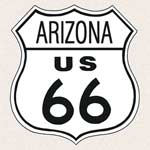 [Source:
[Source: During the meeting in Winslow Jan. 26, representatives from each agency participating took time to explain the programs and grants their agency offers, as well as breakdowns of what needed to be done for the respective program/grant. "Arizona contains over 200 miles of original Route 66 roadway," and EPA press release reads. "with approximately 350 leaking underground storage tanks sites or piping along the route."
In 2004, ADEQ launched the initiative to clean up the leaking tanks. According to ADEQ, 28 percent of these sties still need to be cleaned up. The other 250 sites have been cleaned up or do not need it. One of the biggest topics discussed was the use of Brownfields grants to clean up contaminated properties. The Brownfields program provides funding and assistance to assess and clean up properties where there is or possibly is hazardous substances. "A lot of what happens next falls in the hands of the local communities," remarked EPA Regional Program Manager Steven Linder regarding the project.
During the second day in Holbrook they reviewed a similar project completed in Oklahoma and discussed local needs and interest levels. "It started with remediation of underground storage tanks and now it's branching out to redevelopment and revitalization," Linder said regarding the project. Although some grant funding may be available through the EPA, the agency will function as a coordinator for the project, matching up communities and properties with funding sources, as well as providing many other types of assistance.